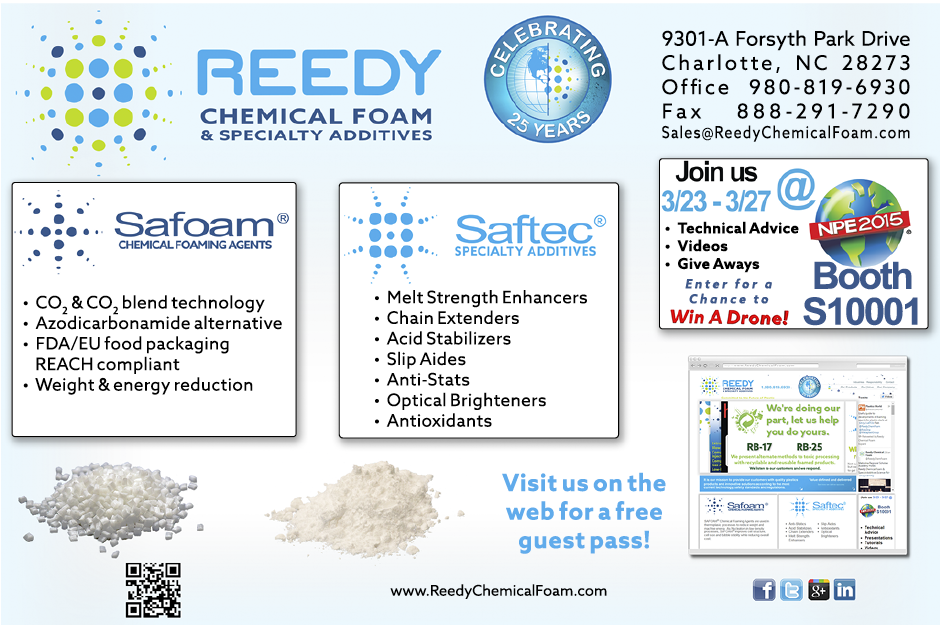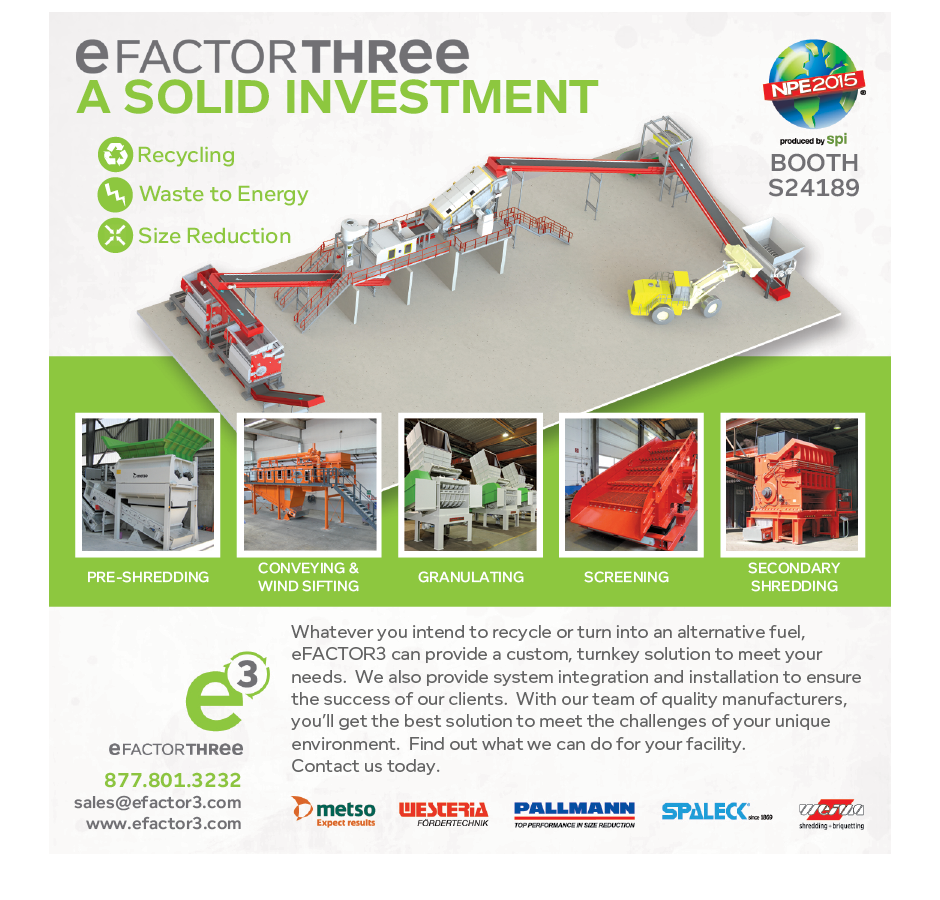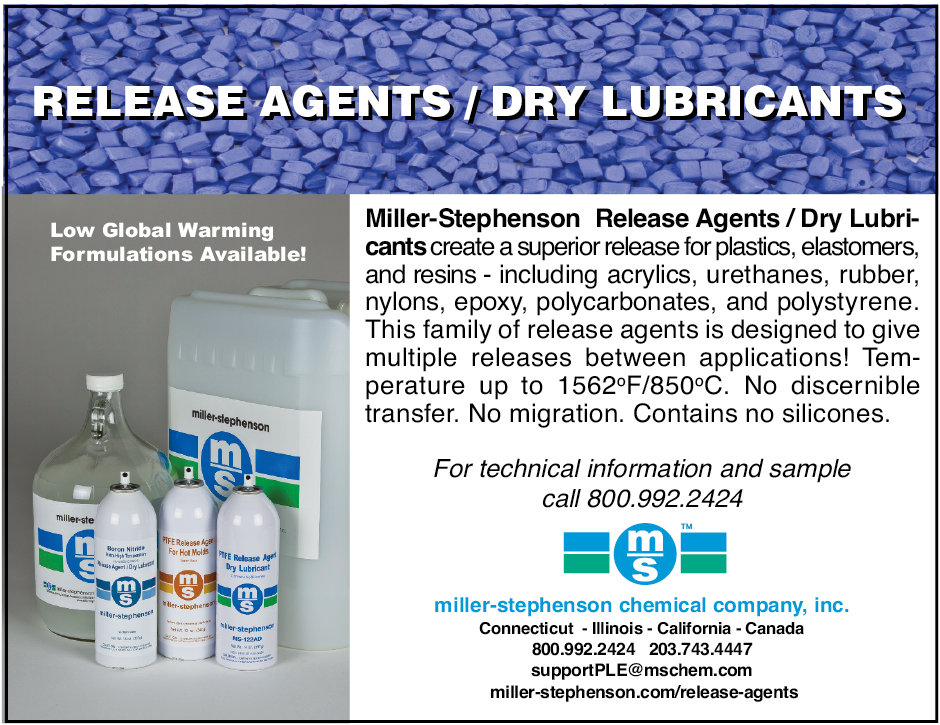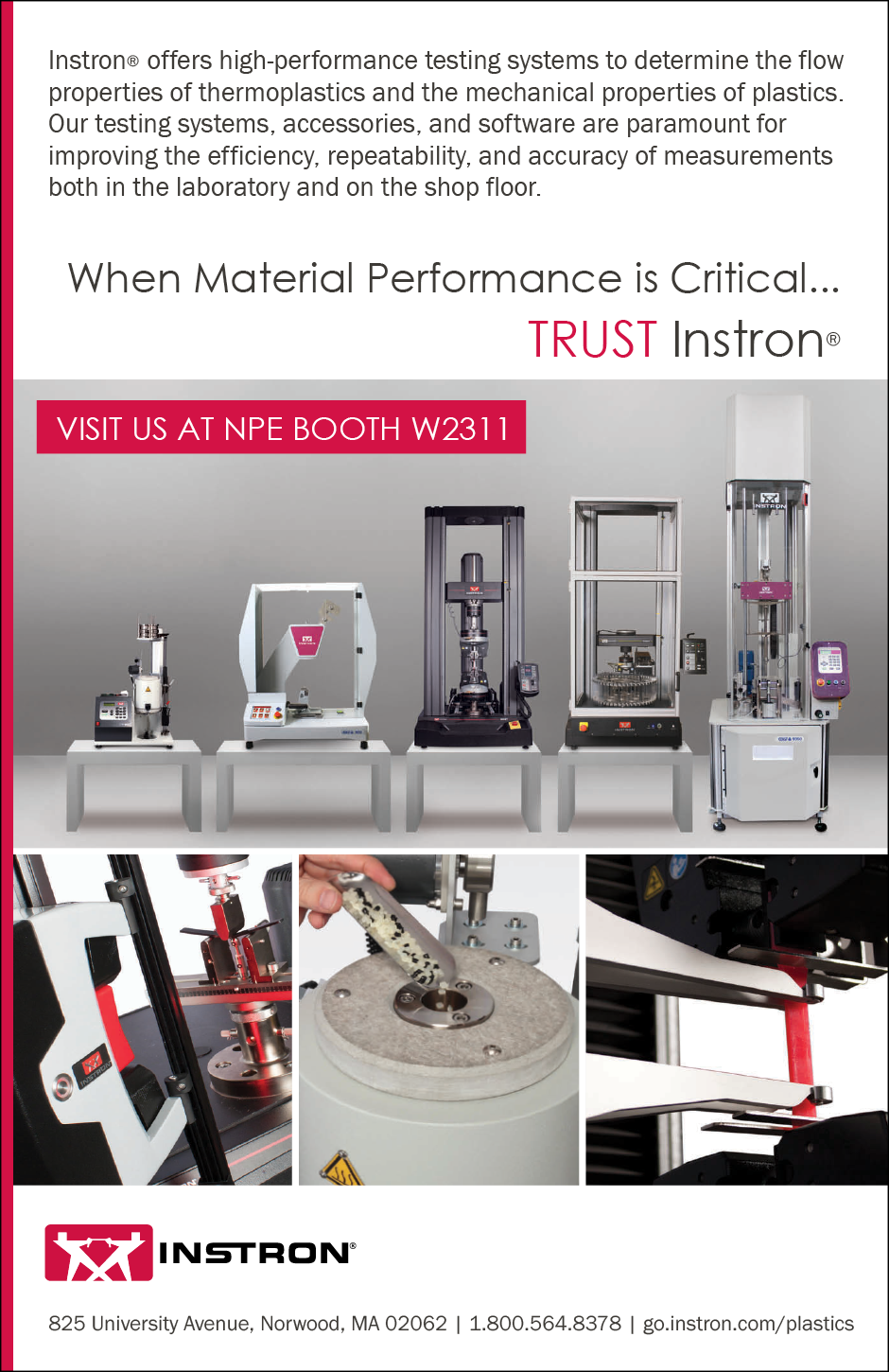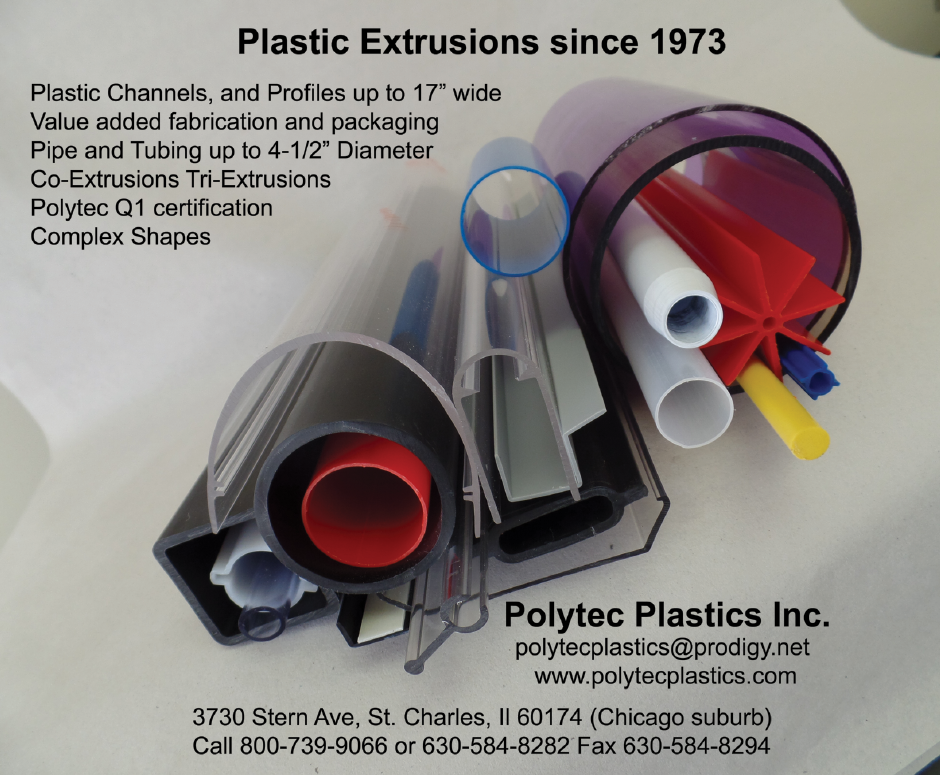International Polymer Engineering (IPE), a custom extruder of thermoplastic tubing and profiles, has introduced a broad, new range of high-precision microbore tubing, monofilaments, and profiles made of high-performance thermoplastics from Solvay Specialty Polymers. These innovative products offer advanced solutions for medical, aerospace, military, and industrial applications. IPE unveiled the new product line at the Medical Design & Manufacturing West show.
IPE has seen growing customer demand for extrusions made of high-performance thermoplastics due to their ease of manufacturing and strong property profile. In particular, the company has seen a major shift toward replacing metals and thermoset materials with advanced thermoplastics in medical applications, according to Jonathan Jurgaitis, melt extrusion manager for IPE.
“Based on the demand from our customers, it’s clear that these high- performance materials have a strong track record, and the industry is familiar with them as a viable option for a range of applications,” Jurgaitis says. “IPE has worked closely with Solvay by tapping into their technical expertise to develop custom products that meet the stringent requirements of demanding end-use applications in the medical, aerospace, and military industries.” IPE reportedly chose Solvay’s sulfone polymers due to their excellent clarity, stiffness, and steam sterilizability.
IPE has also increasingly put Solvay’s Spire® Ultra Polymers to use due to the broad benefits of these materials, including high stiffness and hardness and excellent resistance to chemicals and high temperatures. For example, IPE fabricates microtubes made from Solvay’s KetaSpire® polyetheretherketone (PEEK) resin that deliver greater strength and rigidity than polytetrafluoroethylene (PTFE) microtubes. And they are reportedly easier to work with compared to those made of stainless steel. These microtubes target a range of medical applications including catheters, endoscopic working channels, and laparoscopic instruments. www.solvay.com

Photo courtesy of Solvay
According to the U.S. Bureau of Labor Statistics, there were slightly more than three million nonfatal workplace injuries and illnesses reported in 2013. While this number is lower than in previous years, the question that remains is how many near misses occurred in the workplace that were not reported and could result in a future injury or fatality?
Heinrich’s widely accepted accident triangle theory states that for every major injury, there were 29 minor injuries and 300 near misses. There are many reasons for near misses not to be reported, but a new solution called WorkplaceAware can help companies improve safety by eliminating those barriers to reporting.
In addition to the free WorkplaceAware mobile app, the solution includes the MessageQube, a mini cellular desktop printer that receives text and photo messages from any cellular phone. Using the mobile app, employees can photograph near misses, type a description of the incident, and quickly send it to their company’s or supervisor’s MessageQube. Simple text messages can be sent using the text message feature on any mobile phone.
Once a report prints on the MessageQube, it’s also posted to the employer’s online Enterprise Dashboard where management can view and manage reports, including documenting corrective action taken and escalating reports to higher authorities. Photographs and more detailed reports up to 600 characters in length are sent using the WorkplaceAware app, compatible with Apple and Android operating systems.
Using the system, safety managers are instantly alerted to near miss and safety hazard reports as they print in real time from the MessageQube. A green light flashes each time a new report prints, making managers instantly aware that a report has been submitted. And the system reportedly can be configured to also notify managers via email when reports are filed. www.messageqube.com

Photo courtesy of WorkplaceAware
Solution-dyed synthetic fibers offer many advantages over post-dyed fibers, and Americhem says it offers a truly differentiated product. Post-dyeing refers to the dyeing of yarn or fabric after it is extruded. This leads to fiber that’s primarily colored on the surface. In the solution-dyeing process, the colorant, in the form of a masterbatch, is added to the polymer melt during the extrusion of the fiber, meaning the fiber is colored throughout. Americhem’s solution-dye technology offers better color quality and consistency, superior performance, and a softer hand when compared to post-dyed fibers.
Masterbatch design is critical for optimal color performance of solution-dyed fibers, and not every masterbatch is created equal. While any masterbatch can offer a fiber that’s colored throughout, Americhem says its masterbatches offer color and performance leading to higher yields, increased productivity, cost savings, and a superior overall product.
“A well designed masterbatch is the key to a successful solution-dyed product, and Americhem’s masterbatches lead to environmentally friendly color with [good] performance,” says Vaman Kulkarni, global business development director. Solution dyeing is environmentally friendly—by combining spinning and coloring into one step, it offers energy efficiency and doesn’t use water. www.americhem.com/solutiondye
Datacolor® announced the launch of the “Check 3” portable spectrophotometer. The completely redesigned instrument is said to build on the company’s history of providing portable spectrophotometers for the formulation and quality control needs of color professionals in the paint, coatings, plastics, and textile industries. The instrument reportedly delivers industry-leading color measurement performance while offering correlation to Datacolor’s 600 series of benchtop instruments.
Check 3 features a completely redesigned user-interface with a modern and easy-to-navigate color LCD display. The instrument also includes an LED illuminated viewing port, enabling users to very precisely position samples and assure accurate measurement. The change to a horizontal configuration allows measurement in height- constrained areas. All of these features contribute to improve the user experience during operation.
“Through our commitment to providing our customers with the highest quality color measurement tools, we made the necessary enhancements to deliver an instrument specifically tailored to meet the needs of the modern color professional,” says Cheryl Johnston, Datacolor product marketing manager, Portable Instruments. “Check 3 provides customers with enhanced ease-of-use and improved efficiency while delivering the same unrivaled color measurement performance they expect from Datacolor.” www.datacolor.com

Photo courtesy of Datacolor
Longtime market leader in all-electric injection presses Niigata will introduce two new machines to the market at NPE2015. The company introduced the world’s first all-electric vertical injection molding machine in 1996, and its latest model, the S7000, capitalizes on Niigata’s long history and 100% focus on making all-electric machines, the company says.
While many vertical machines have high table heights, forcing the customer to build a work platform around the machine, the company’s patented vertical toggle system allows lowering the table height on the 110-ton model to just 3.4 feet (1 m) from the ground, including leveling pads. The machine has a wider table than standard verticals, allowing larger molds to be placed on the platen. The MDVR110S7000 has a mold size capacity of 500 mm x 500 mm.
Having introduced the first fully-electric machine at the Japan Plastics Fair in 1984, Niigata says it has devoted all of its R&D resources toward improving all-electric molding machine technology. Using the Japanese Kaizen system, the company is now introducing the seventh generation of all-electric machines, built entirely in Japan to tough quality standards. www.niigata-us.com
At this year’s NPE, Coperion and Coperion K-Tron will present their latest technology developments that reportedly are advancing compounding and bulk materials handling to the next level.
Representing their comprehensive portfolio in compounding and extrusion, bulk materials handling systems, feeding solutions, packaging systems and service for lower-rate compounding, and bulk materials handling, equipment on display will include:
- a dual-blower vacuum pressure railcar unload system;
- S100 single screw and T35 twin screw loss-in-weight feeders; • the twin screw laboratory extruder ZSK 26 Mc18;
- the strand pelletizer SP 100 EN; and
- an FFS Packaging Machine, IBP 250.

Photo courtesy of Niigata
For higher-rate bulk materials handling, the system supplier will show a newly redesigned Smart Flow Meter, a ZRD 400 heavy-duty premium rotary valve, and new high-rate railcar loading spreader technology for loading polymer pellets.
The dual-blower rail unload system pneumatically transfers pellets, powder, and granular materials from railcars at conveying rates in excess of 120,000 lb/hr (54,430 kg/hr). Dual-blower systems are available with up to 10-inch (254-mm) line sizes. Using separate vacuum and pressure blowers, the system unloads material from the railcar at higher conveying rates and for longer conveying distances, the company says. A vacuum blower draws material from the railcar to a self-cleaning Filtair™ Series filter receiver that separates the product from the conveying air. Mounted below the receiver is an Aerolock™ rotary valve that meters the product into the pressure side of the system for delivery to storage.
Coperion K-Tron’s modular loss-in-weight (LIW) feeders are said to be ideal for materials with varying bulk density and for material handling automation. The S100 Single Screw LIW Feeder offers feed rates from 0.4 to 560 ft³/hr (11-15,800 L/hr). The single screw feeding elements handle free flowing powders, granules, pellets and other free-flowing materials. The T35 Twin Screw LIW Feeder offers feed rates from 0.04 to 88.0 ft³/hr (1.1-2490 L/hr). The twin-screw elements reportedly are ideal for floodable powders and more difficult, sticky, or hard-to-flow materials. Displayed with both feeders will be the patented Smart Force Transducer (SFT) Weighing Technology, which offers accurate feeding, metering, and batching.
The FFS Packaging Machine IBP 250, with automated features, provides accurate weighing, ideal dosing, and hygienic packaging for crystalline, granular, beaded, or flaked goods. The system features a small footprint, and the controls can be navigated intuitively via a touchscreen, the company adds. Its modular design allows an easy upgrade of machine performance to be made without replacing the complete system. A check weigher, metal detector, bag marking system, and automatic cleaning can optionally be integrated into the system.
In addition to displaying these products on the NPE show floor, Coperion and Coperion K-Tron will also offer visitors a new digital application to experience their equipment within a compounding plant, highlighting their complete capabilities in compounding and extrusion, feeding, and bulk materials handling, as well as project management and engineering. www.coperion.com

Photo courtesy of Coperion
At NPE2015, Arburg will present a total of ten exhibits on high-end injection molding technology and industrial additive manufacturing to cover the entire production spectrum—from one-off parts through to mass-produced items.
At its 650-m3 exhibition stand W3729 (Level 2 in the West Hall), five Allrounder injection molding machines and two Freeformers will demonstrate sophisticated applications and innovative processes covering topics such as lightweight construction, multi-component injection molding, automation, and LSR processing.
Four more Allrounder machines will be featured on partner stands. In the context of the accompanying conferences, Arburg will also hold several presentations on the topic of additive manufacturing. “For us, the NPE is the most important trade fair in the USA, at which we will present product premieres, innovative processes, and sophisticated applications to the trade [show] visitors,” says Friedrich Kanz, managing director of the North American Arburg subsidiary. “The sales launch of the Freeformer for industrial additive manufacturing in America will also coincide with the exhibition,” Kanz adds.
“With our offerings, we cover the entire production spectrum—from industrial additive manufacturing of one-off parts and multi-variant small batches, through to cost-effective injection molding of mass-produced articles.” He also says that production efficiency is the focus of all of the exhibits.
Arburg will not only be represented by its exhibition stand at NPE, its company experts will also contribute keynote presentations on the topic of additive manufacturing. Managing director of sales Helmut Heinson will provide an outlook on global and U.S. markets at the special NPE3D event. And at ANTEC®, Heinz Gaub, managing director, Technology & Engineering, will give a presentation on how additive manufacturing is changing the plastics industry. www.arburg.com

Photo courtesy of Arburg
